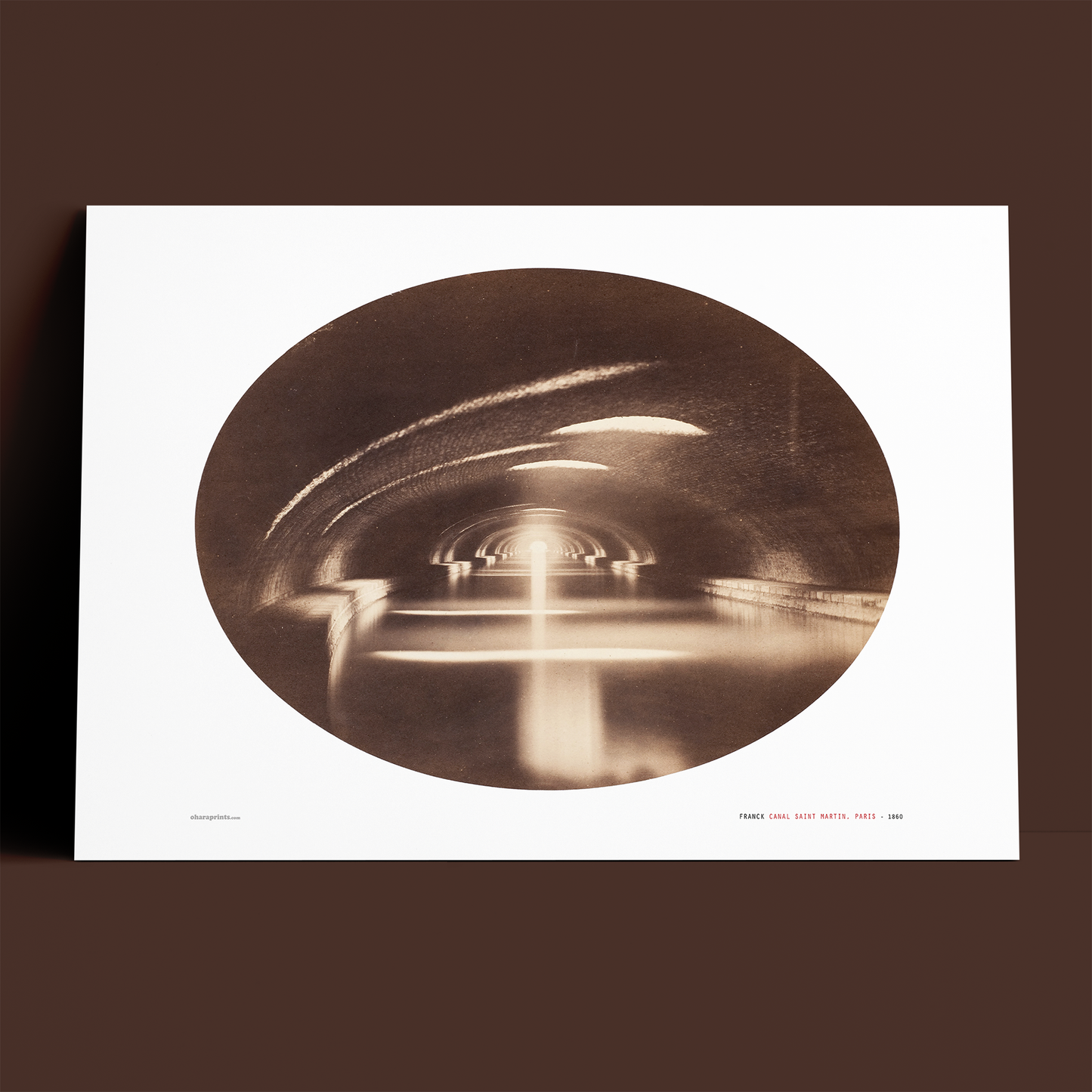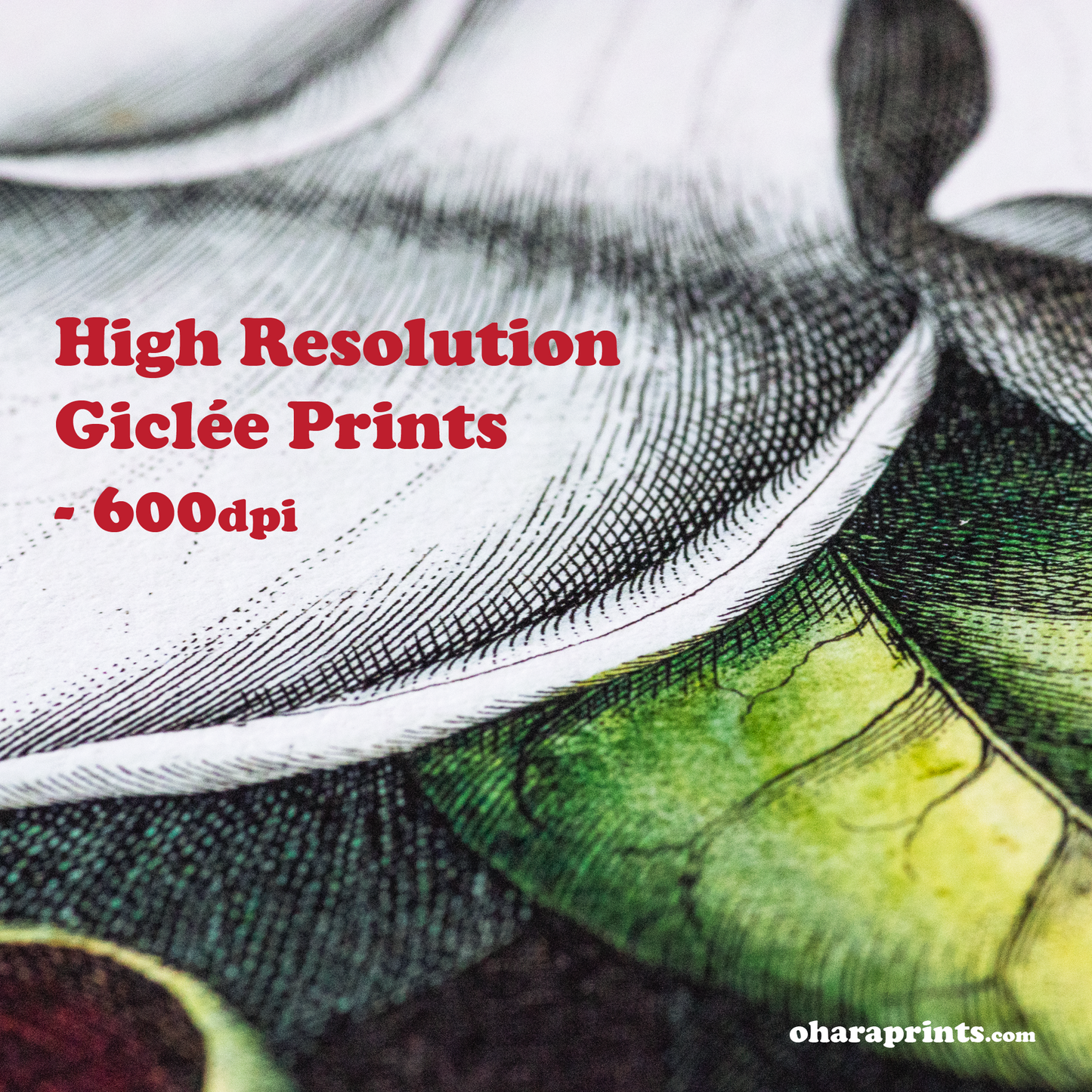Ohara Prints
FRANCK - Canal Saint Martin, Paris
FRANCK - Canal Saint Martin, Paris
Couldn't load pickup availability
THE ARTWORK
"Canal St. Martin" by Franck, photographed in 1860, captures the atmospheric interior of the underground tunnel section of the Canal Saint-Martin in Paris, France. Unlike the more open, tree-lined parts of the Canal Saint-Martin, this photograph delves into the darker, subterranean portion where it runs beneath Paris. This tunnel stretches between Place de la Bastille and Rue du Faubourg du Temple, offering a unique and less-seen perspective of Paris's infrastructure.
Franck’s image is remarkable for its portrayal of the interplay between light and shadow in the tunnel. The long exposure times required in early photography would have created a soft, ghostly glow, with light filtering in from the tunnel’s entrances and reflecting off the water. The canal, quiet and still in the photo, contrasts with its industrial purpose of transporting goods beneath the city.
This photograph is significant because it highlights both the technical prowess of Franck as a photographer and the innovative nature of Parisian urban design during the Second Empire.
THE ARTIST
Franck was a French photographer known for his work during the early years of photography’s development. Active during the 1850s and 1860s, Franck was part of the generation that embraced photography as a new artistic and documentary medium. He is particularly noted for his landscape and architectural photography, capturing images of monuments, streets, and buildings across France.
Working during the era of wet collodion processes, Franck’s photography was marked by technical challenges, such as the need for long exposure times and the difficulty of transporting heavy equipment. Despite these limitations, Franck achieved remarkable clarity and depth in his images, demonstrating a keen eye for composition and light.
His work fits within the broader context of mid-19th-century photographers like Gustave Le Gray and Édouard Baldus, who also focused on landscapes and cityscapes. While not as famous as some of his contemporaries, Franck contributed to the rich visual documentation of French architecture and culture during the Second Empire period.
THE PRINT
• A4 Size = 29.7cm x 21cm = 11.7" x 8.25"
• A3 Size = 42cm x 29.7cm = 16.5" x 11.7"
• High resolution giclée print - 600dpi
• Printed to order
• Unframed & unmounted
• Professionally printed using Canon imagePROGRAF printers
• Digitally restored by OharaPrints from high resolution scans of the original artwork
• Made in and shipped from Casterton, Victoria, Australia
PAPER
• Canson Infinity - Arches BFK Rives White
• Paper weight = 310gsm
• 100% cotton
• Archival, museum grade
• Acid free
• No OBAs (optical brightening agents)
Arches BFK Rives is a high-quality, archival-grade paper manufactured at the Arches paper mill in France - one of the oldest papermakers in Europe. It is made from 100% cotton rag using a time-honoured manufacturing process, giving the paper exceptional durability, longevity, and resistance to yellowing or deterioration over time. Despite its substantial weight and thickness it maintains a very soft and supple feel. The paper has a natural white tone and is completely free of any optical brighteners (OBAs), allowing for superb colour rendition and deep blacks.
INK
• Canon Lucia Pro Inks
• Pigment based
• Archival, museum-grade
• Brilliant colours, even gradient and razor-sharp lines
• Highly stable and fade resistant, excellent humidity-fastness
SHIPPING & HANDLING
• All orders are dispatched on the NEXT BUSINESS DAY after receiving the order
• All prints are shipped via AUSTRALIA POST with TRACKING
• For postage rates and estimated delivery times please see our SHIPPING page
• All prints are shipped flat, not rolled
• Each print is individually placed into a resealable, archival grade plastic protective sleeve
• Prints are carefully packaged in very sturdy 700gsm cardboard envelopes, along with 1050gsm boxboard sheets which provide extra strength & rigidity to prevent bending or folding during transit
Share




















